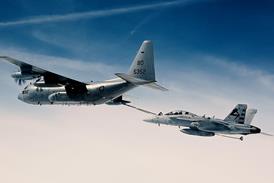The International Air Transport Association (IATA) has invited five Asian and US carriers to participate in flight trials through North Korea's Pyongyang Flight Information Region (FIR), following the installation of a new direct-communications landline to South Korea.
A Cathay Pacific Airways Boeing 747-400 freighter, en route from Anchorage to Hong Kong, is scheduled to be the first aircraft to pass through North Korean airspace on 1 March, 1998. Cathay will be followed by a Delta Air Lines flight to Seoul the next day and an outbound Korean Airlines aircraft on 3 March.
Northwest Airlines and United Airlines are due to make similar consecutive flights on 4 and 5 March. Each aircraft will follow the newly opened route, B467, entering and leaving the oceanic sector of the Pyongyang FIR from the neighbouring Vladivostok and South Korean Taegu FIRs at points Kansu and Nular, respectively.
According to IATA, the aircraft will each take about 40min to transit the Pyongyang FIR, using route B467. None of the flights will pass over the North Korean landmass and, instead, are to remain in the eastern oceanic half of the FIR to conform with an US Federal Aviation Administration ban on US airlines operating east of longitude 132¹E.
The week-long test flights are intended to lead to the start of scheduled operations on route B467 from 23 April. The opening of the Pyongyang FIR means that commercial aircraft will no longer have to make a detour around North Korean airspace, which IATA estimates could save airlines up to 30min in flight time between Asia and North America.
A new fibre-optic landline will connect Taegu with Pyongyang via the Panmunjom border-truce village. The North Korean area control centre (ACC) will also have a high-speed satellite voice and datalink communications with the Beijing and Vladivostok ACCs using the Asiasat 2 satellite, replacing an HF radio circuit.
Source: Flight International























